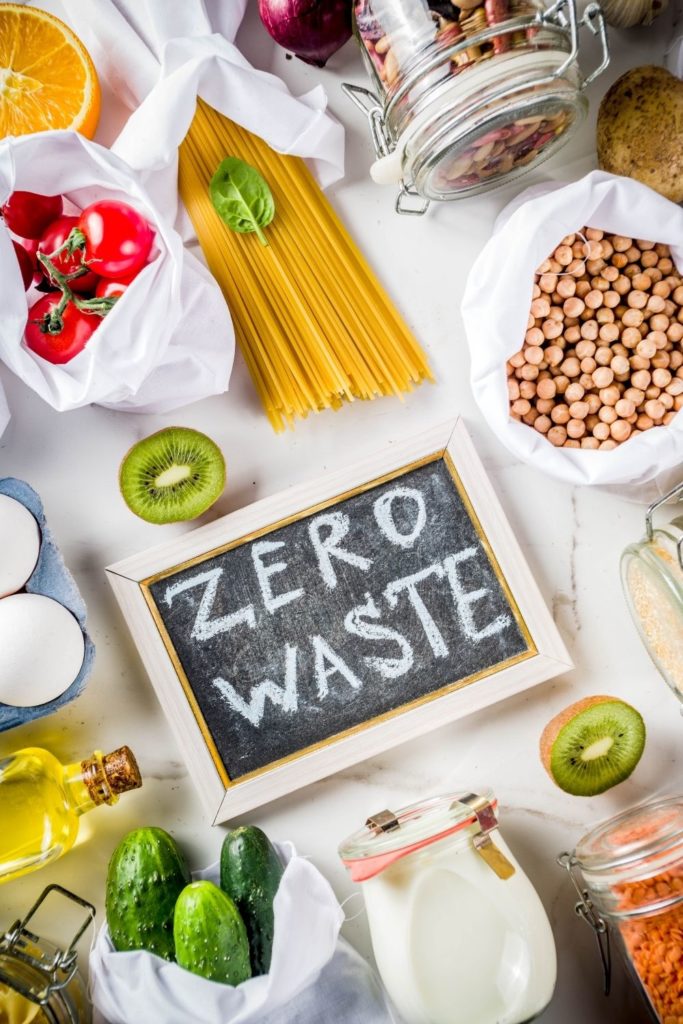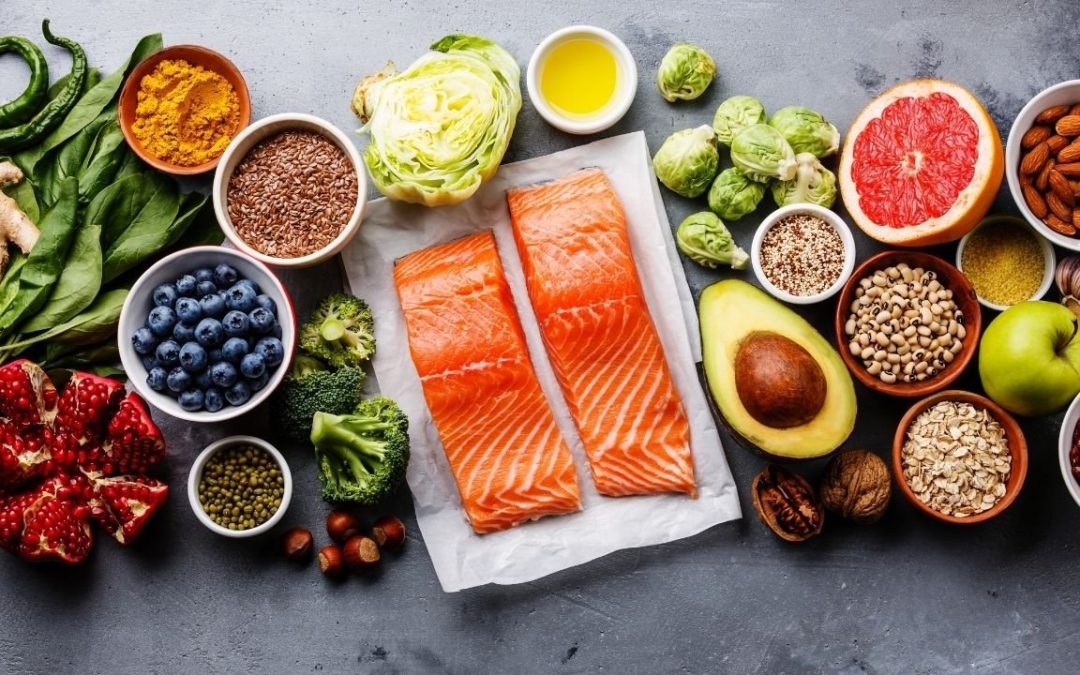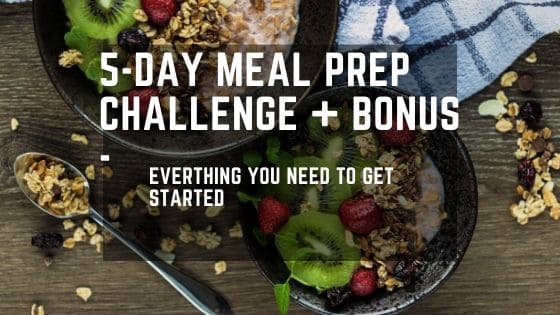Last Updated on March 29, 2021 by TheMealPrepNinja
Meal Prep For Zero Waste: Why Should You Care and 9 Tips To Enhance Efficiency
Meal prep for zero waste. Fact: Did you know that the American household tosses about $2000 worth of food annually while their Canadian counterparts waste about $1500? When we factor in other food waste sources (farms, restaurants, and grocery stores), we get a combined total of a whopping $165 billion of wasted food in America. Canada accounts for $31 billion.
Does meal prep for zero waste sound like a new phenomenon? Thinking of it, it doesn’t sound that complicated. Maybe you fall into the growing number of people who increasingly find their coolers or fridges turning into a cesspool of toxic waste dump. How many times do you find yourself tossing out what used to be perfect foods that turned moldy, stale, or rancid?
Helloooo! I was one of them! Guilty as charged.
Fortunately, there’s a ton of things we can do to prevent food waste.
Who doesn’t want to consume delectable food that’s at the peak of freshness? No matter what foods we eat or the program we follow, we want to be sure we get the maximum benefit from them. And that takes us to my second point, WASTE!
What we eat is probably the biggest trash-maker (not to mention plastic papers, wrappers, and containers). The leftover moldy pizza and limp carrot sticks compound the problem further. Conversely, what we eat is also probably the best way to reduce our waste. That’s why we shouldn’t ignore the potential of a zero-waste meal prep plan.
Let’s Dive Into the Basics First.
Meal planning isn’t a complicated thing. It basically doesn’t mean anything. To be accurate, it is what you want it to be. It may range from jotting down what you want in your upcoming days, so you have an organized shopping, prepping, and freezing all your meals ahead of time. You may also just prep lunches to take to work.
On that note, other than saving you time and money, a meal prep for zero waste factors what you have in your freezer, pantry, and fridge, using them to come up with nutritious meals, making it less likely for you to toss out or waste food.
Again, we reiterate the fact that meal prepping rules aren’t cast in stone. It’s all about enjoying the process and going for what works for you. However, for purposes of simplicity, we can approach it at different levels.
Zero Waste. What Does it Even Mean?
Well, in many ways, zero waste is literally unattainable on both personal and business levels. When it comes to meal prep, we could refer to it as a form of recycling to ensure that food products are maximally used. Leftovers are incorporated into the next meal.
We don’t need to perfect it, really. Just as zero waste chef Marie Bonneau once said,
“We don’t need a handful of people perfecting zero waste; we need millions doing it imperfectly.”
Different Levels of Zero-Waste Meal Prep
Let’s be honest here– meal prep will depend majorly on your interest in the entire process and other factors such as time and space.
1st Level
Here, it’s all about theoretical planning (putting things down on paper or in an online spreadsheet, whichever works for you) without having cooked anything ahead of time. This stage helps you stay focused on what you’ll need in your coming week since you are better positioned to understand your consumption habits. Only put down what you need to avoid wastage.
It works wonders for those who don’t have enough fridge or freezer space to store up prepped meals. Further, it’s best suited for those who can’t dedicate a block of time for meal prepping.
2nd Level
Here, you have all the space and time to take care of the building blocks, and this is how most people do it– getting rid of the big stuff. You could batch cook essential items such as rice, black beans, broth, and roasted veggies while leaving the sides and toppings for later.
It’s great for those who have time to spare, cooking things that would otherwise eat into their working week. Since you’ve monitored your consumption, you’ll exactly know how much of each item you need to push you through the week.
3rd Level
This is usually the most intense of all. It involves prepping, cooking, and portioning your meals, depending on your requirement and the upcoming week. If you can carve out a single block of time to prepare, then this is for you. It may take the wind out of you, but it ensures that the coming week is a breeze.
Tips For Implementing Meal Prep For Zero Waste
Just like any other regular meal prep, a zero-waste meal prep heavily relies on one’s organization more than anything else. Below are some tips on how you could pull off a successful zero-waste meal plan. You could even combine a few or more of these tips to enhance efficiency.
Proper Storage
An essential step in ensuring food doesn’t go to waste is by storing them properly. Take note that your fridge has different temperatures in different spots. Therefore, some foods are better stored in other places than others. Other foods are better stored outside the refrigerator for maximum freshness. Not only does proper storage prolong the life of your ingredients, but it also ensures that wastage is at a minimum. Airtight food storage containers are a great way to store your dry foods without them going bad and having to throw them away.

Organize Your Pantry and Fridge
Always have the habit of taking stock of your fridge or pantry to know what you have and avoid double purchases or duplicate items.
You could further conduct regular clean-ups to rid your fridge of residue and dirt that could affect product freshness.
After grocery shopping, always put older ingredients at the front so that you use them first. Also, put bulk ingredients in clear containers for easy visibility. A shopping list magnetic pad for your refrigerator is a great way to stay organized.
Planned Shopping
Impulse buying is the name. You’ve probably fallen victim to this countless times. You spot a vibrant, fresh, and attractive fruit only to toss it away since you couldn’t figure out what to do with it.
Design your meal plan for the week to figure out what you need for your meal prep. This will aid you in getting what is required, thus limiting food wastage in the future.
Buy Local
Make it a habit to buy local items that are in season. If they are close to where you live, even better. Not only will your food be cheaper, but it will also be fresher for longer since it traveled a shorter distance to your plate. The items at your local farmers’ market are usually picked the previous day or early in the morning before heading to the market, meaning they’ll last longer in the fridge.
Buying What You Need
I know it’s tempting to get a bang on your cash, mainly when products are in season. However, you should ask yourself whether you’ll finish off the whole bunch of tomatoes before they go off. The cost-effectiveness of bulk buying is only achievable when you actually end up using everything that’s bought. You’d be losing cash if you end up throwing away even a tiny portion of food that you purchased.
Use Your Senses
When it comes to labels, people take them as the gospel truth. Best before dates commonly refer to foods that are fresh before the indicated dates. But is it really the gospel truth? In some instances, you may have found that foods go bad before the stated date or are still fresh after the expiry date.
Terms such as; sell by, prepared on, freeze by, and sell by are all too common. Best before date doesn’t necessarily uphold the safety of a product. You may also end up tossing food that’s perfectly fine and safe based on the expiry date leading to food wastage. This is where your senses come to play; sight, smell, touch, and taste. Use them to assess the condition of your food.
Creatively Repurpose Leftovers
It’s hard to accurately determine the quantity of food you’ll consume in a week without having leftovers. Good for you if you have no problem eating bowls of creamy pumpkin noodles or chili three days in a row. However, those who aren’t into leftovers could creatively repurpose and use them by combining them with other dishes to avoid wastage.
You could further freeze them in labeled containers to enjoy in the future if you can’t repurpose them.
Leave Skins on Veggies and Fruits
It might sound weird to you since you’re accustomed to peeling your veggies and fruits. Did you know that many veggies and fruits don’t need peeling? We recommend that you go for organic if you eat the peels since peels could contain pesticide residue. You can also use airtight reusable food storage bags for your fruits and vegetables.

Finally, when none of the above works,
Compost
In the sad eventuality that your food gets spoilt, don’t toss it in the trash. You could come up with a compost bin in your yard. This way, you could use the compost in your garden to grow new ingredients. You can also store your compost in a small metal counter compost bin.

To Cap It Off Meal Prep for Zero Waste
Planet over profit is a whole different ball game when it comes to zero waste. However, when we’re looking at meal prep for zero waste, it kind of hits home when you’re looking at the time factor and, more so, savings. Your pocket will thank you for it. Hopefully, you’ll get to apply the above tips since they’ll go a long way in ensuring that you keep your food wastage in check.
Other Helpful Resources
How To Meal Prep for Picky Eaters
Meal Prep Containers: Healthy Eating Redefined
How To Meal Prep For Kids: Easy to Follow Steps

Jim Lopez, the founder and editor of The Meal Prep Ninja, shares his journey from a passionate bodybuilder and fitness enthusiast to a certified nutrition coach. Certified by Precision Nutrition, Jim aims to empower others with knowledge on meal prep and nutrition, offering resources for busy individuals to enjoy low-calorie, tasty foods. His blog is a community for sharing healthy eating habits and meal prep recipes



